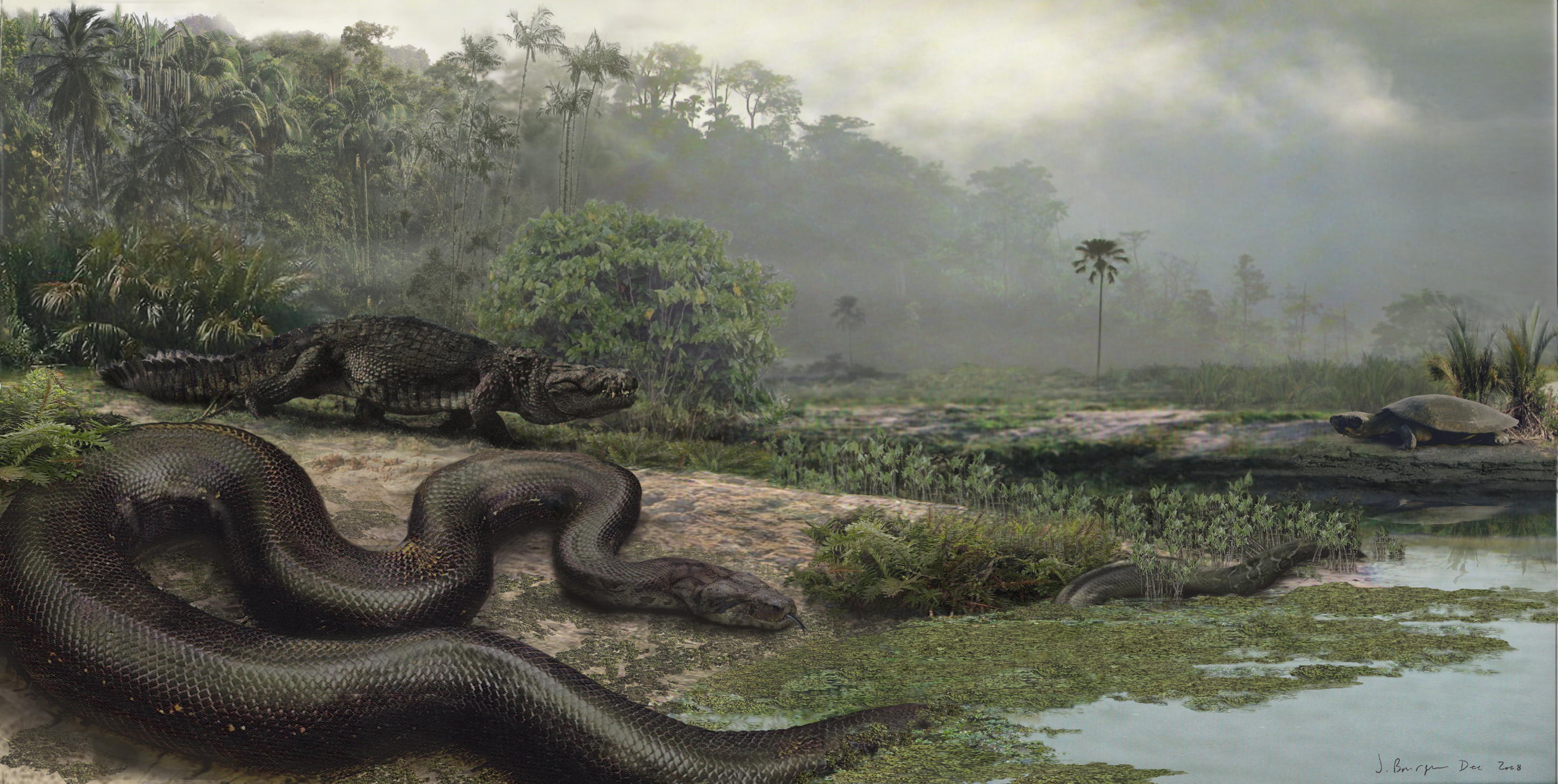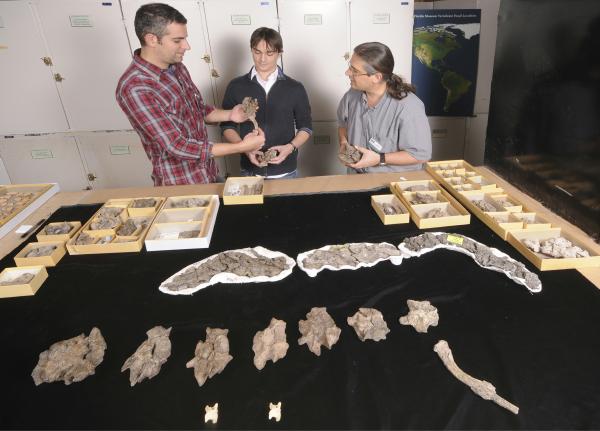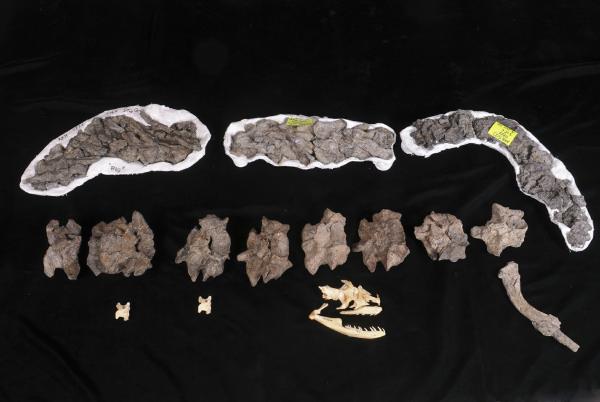Surrounded by huge trucks extracting coal from Cerrejon, one of the world's largest open-pit mines, researchers discovered fossilized bones of super-sized snakes and their prey, crocodiles and turtles, in the Cerrejon Formation, along with fossilized plant material from the oldest known rainforest in the Americas, which flourished at the site 58-60 million years ago.
Estimated Titanoboa size: 42 feet (13 meters); 1140 kilograms. According to the Guinness Book of World Records, the longest snake ever measured was 10 meters (33 feet) in length. The heaviest snake, a python, weighed 183 kilograms (403 pounds).

This artist's rendering of Titanoboa cerrejonensis demonstrates the great snake's size. It is anticipated the boa spent much of its life in or near water. Photo by: Jason Bourque, University of Florida
Jason Head, the lead author of the new species description in the journal Nature, is a research associate at the Smithsonian's National Museum of Natural History and assistant professor of ecology and evolutionary biology at the University of Toronto Mississauga. Head, with David Polly, associate professor of geosciences at Indiana University, used the ratio between vertebral size and the length of existing snakes to estimate that this boa-like snake must have reached 13 meters (42 feet) in length and weighed more than a ton.
Titanoboa, as it is now called, is the largest snake ever known, and was the largest non-marine vertebrate from the epoch immediately following the extinction of dinosaurs 65 million years ago. "The discovery of Titanoboa challenges our understanding of past climates and environments, as well as the biological limitations on the evolution of giant snakes." said Head "This shows how much more information about the history of Earth there is to glean from a resource like the reptile fossil record."

University of Florida graduate student Jason Bourque (left) demonstrates how a rib would have articulated onto a vertebra of the largest snake the world has ever known on Dec. 17, 2008. Partial skeletons of the giant, boa-constrictor-like snake named Titanoboa, estimated to be 42 to 45 feet long, were found in Colombia by an international team of scientists and studied at the Florida Museum of Natural History on the UF campus. UF graduate student Alex Hastings (center) and UF vertebrate paleontologist Jonathan Bloch (right) are each holding a vertebra as well. In the foreground are various other Titanoboa fossils, including segments of the articulated skeleton. Photo by Ray Carson - UF News Bureau
Titanoboa's size indicates that it lived in an environment where the average yearly temperature was 30-34 degrees Celsius. This estimate coincides with paleoclimatic models predicting greenhouse conditions. "This temperature estimate is much hotter than modern temperatures in tropical rainforests anywhere in the world. The fossil floras that the Smithsonian has been collecting in Cerrejon for many years indicate that the area was a tropical rainforest. That means that tropical rainforests could exist at temperatures 3-4 degrees Celsius hotter than modern tropical rainforests experience," said Jaramillo.

A display of vertebra and rib bones from the Titanboa, which grew up to 45 feet, weighed 1.25 tons and was the largest vertebrate on earth for 20 million years. On the bottom center are the vertebra and skull of a modern 17 foot Anaconda for size comparison. Partial skeletons of the giant, boa-constrictor-like snake named Titanoboa, were found in Colombia by an international team of scientists and studied at the Florida Museum of Natural History on the UF campus. Photo by Ray Carson UF News Bureau
Support for this research comes from the National Science Foundation, Fondo para Investigaciones del Banco de la Republica de Colombia, Smithsonian Tropical Research Institute Paleobiology Fund, the Florida Museum of Natural History, a Geological Society of America Graduate Student Research Grant and a National Sciences and Engineering Research Council of Canada Discovery Grant and the Cerrejon Coal Mine.
Researchers and institutions: Jason J. Head, University of Toronto Jonathan I. Bloch, University of Florida, Gainesville Alexander K. Hastings, University of Florida, Gainesville Jason R. Bourke, University of Florida, Gainesville Edwin A. Cadena, Smithsonian Tropical Research Institute; University of Florida, Gainesville Fabiany A. Herrera, Smithsonian Tropical Research Institute; University of Florida, Gainesville David Polly, Indiana University, Bloomington Carlos A. Jaramillo, Smithsonian Tropical Research Institute
Article: Jason J. Head, Jonathan I. Bloch, Alexander K. Hastings, Jason R. Bourke, Edwin A. Cadena, Fabiany A. Herrera, P. David Polly, and Carlos A. Jaramillo. 2008. Giant boid snake from the paleocene neotropics reveals hotter past equatorial temperatures. Nature 457, 715-717 (2009).




Comments